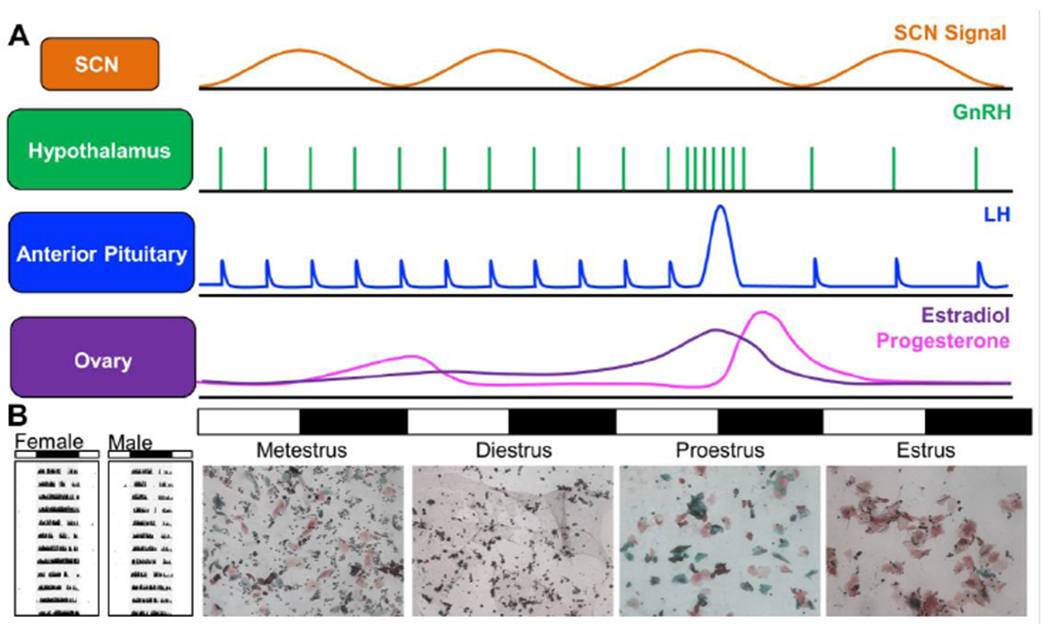Figure 3.

Reciprocal interactions between reproduction and circadian timekeeping. A. The SCN provides a time-of-day signal to regulate timing of the LH surge. Changes in hormone release and vaginal cytology are represented for the mouse. B. Representative single-plotted actograms of wheel-running rhythms in a female and male mouse illustrating cyclical changes in activity levels across the 4–5-day estrus cycle. In the actogram, each line depicts 24 h, with the time of darkness indicated by the black bar above the actogram and the internal gray shading.
